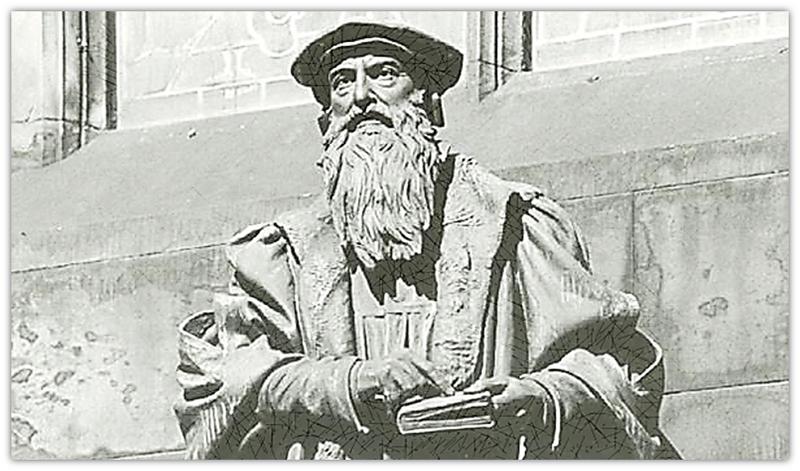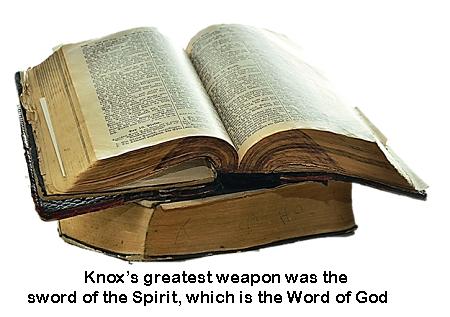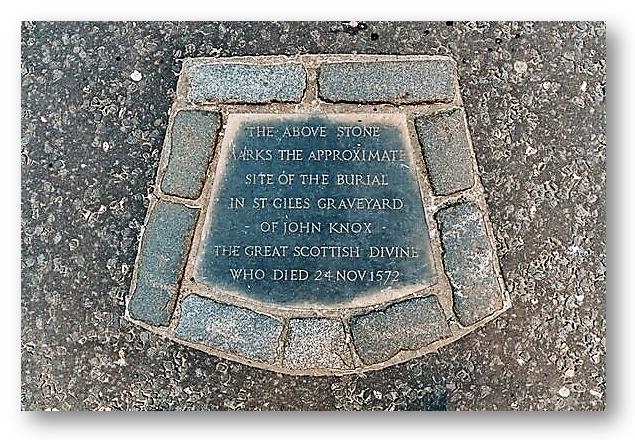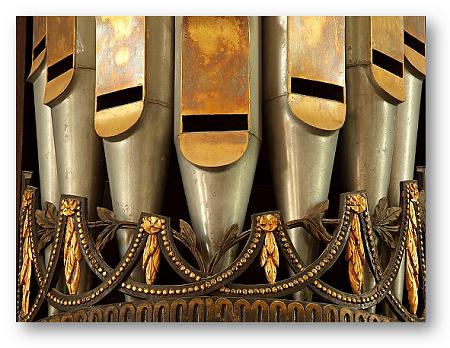Interview on John Knox on the 500th Anniversary of His Birth
Interview on John Knox on the 500th Anniversary of His Birth

John Knox was probably born in 1514 at Haddington, Scotland, and was educated at St. Andrews University. He was ordained a priest in the late 1530s but soon gave his allegiance to the Reformed cause due primarily to the influence of George Wishart, whose rousing sermons in the mid-1540s greatly impacted him and many supporters of reform. He then became a tutor, a minister in St. Andrews, a galley slave in French bondage, and a royal chaplain to Edward VI, whose offer of a bishopric he declined. After some years of exile, he returned to Scotland in 1559 where he became the leading voice of the Reformation in Scotland. As minister of the High Kirk of Edinburgh (St. Giles), he often preached to thousands during the week. Through his sermons, writings, administrative abilities, and powerful personality he laid the foundations for the Church of Scotland for generations to come. His frank and dramatic interviews with Mary, Queen of Scots became the stuff of legend and provided considerable material throughout the centuries for historical paintings, books, and films. He died in his upper fifties in 1572. At his funeral, Regent Morton, who was not a friend of Knox nor of any Reformed ministers, acknowledged, “Here lies one who neither flattered nor favoured any flesh.”
The questions in this article were asked the editor by Evert Vlastuin for an article in the Reformatorisch Dagblad, in commemoration of the 500th year of Knox’s birth.
1. Some well-known reformers such as Luther and Calvin were really academic scholars. Was John Knox an academic scholar as well?⤒🔗
Although he held no teacher post in any university, John Knox was among the best educated men of his time and place. He was certainly a good student, as any scholar should be. The six volumes of his collected writings show that he was a master of the English language, a sound thinker, a courageous advocate, and an able controversialist.
Scotland was blessed with four universities in those days, and they were centers of Reformed thought and action. With men such as Andrew Melville of Glasgow at work on the academic front, it is no wonder that Knox felt free to direct his energies elsewhere.
Knox was ordained to serve as a parish priest, and when he embraced Reformed principles, he devoted himself to the ministry of the Word and sacraments. He was first of all a great churchman, laboring for reformation of the doctrine, worship, and polity of the national churches of England and Scotland. As a man of public affairs, Knox was also a great patriot who roused his fellow Scots to embrace reform and resist tyranny in the name of Christ the king.
2. Richard L. Greaves calls Knox a “prophet” in Old Testament style. Is he right?←⤒🔗
Greaves is not alone in his assessment. Knox’s greatest weapon was “the sword of the Spirit, which is the Word of God.” As any prophet should do, Knox faithfully proclaimed the Word of the Lord as recorded in Scripture. As a preacher, Knox had few peers and no betters. Knox himself would no doubt prefer the title accorded him by W. Stanford Reid as “the trumpeter of God.”
Knox’s greatest strength was his ability to “stay on message,” as American politicians say today. He came home to Scotland from Geneva with a solid grounding in Reformed truth, and a thorough grasp of what needed to be done to reform the Church of Scotland and emancipate the Scottish nation. His strategy was to persist in proclaiming the same truths, striving toward the same goals, defying all opposition, and enduring to the end.

3. Theologians after Luther and Calvin are called Lutherans and Calvinists. Nobody speaks of “Knoxians” or “Knoxites.” Could we say that he made a “school” from a theological point of view? If yes, what was his heritage? If no, in what field does his heritage lay?←⤒🔗
Knox never claimed any originality of thought and never sought to gather any following around himself or his ideas. Neither did Luther or Calvin. They all claimed to owe everything to Moses and the prophets, to Christ and His apostles, to God and His Word.
Conflict among continental Protestants led to the coining of these theological patronymics to serve the purposes of internecine theological warfare. Some Lutherans sought to out-Luther, Luther posing as “Gnesio-Lutherans,” in opposition to the milder and more conciliatory views of Philip Melanchthon. When they could not refute the arguments of Calvin, they dismissed his teachings and practices as mere “Calvinism.”
It is to the credit of Scottish Presbyterians that they never promoted any cultus around the name or memory of John Knox. As for Knox, he would be pleased to know that his grave, marked by a tablet engraved with the initials “JK,” lies under the asphalt paving of an Edinburgh parking lot.
Knox’s heritage was nothing theoretical, academic, or partisan. He furnished the Church of Scotland with her creed, the Scots Confession of 1560; her liturgy, the Book of Common Order of 1564; and her polity, a robust Presbyterianism rooted in Scripture that resisted all subsequent efforts to corrupt or supplant it. Others assisted and contributed to these endeavors, but in human terms their success depended upon Knox’s clarity of vision and strength of will. Knox in turn depended upon God and His Word.
It must not be forgotten that in Scotland, the struggle for a Reformed church went hand in hand with the struggle for the nation’s freedom from tyranny and misrule. Knox stands tall among the champions of the rights and freedoms of the Scottish people. That “Knoxian” heritage was carried from Scotland to the United States, Canada, Australia, and many other parts of the world.
4. How much is really known about Knox’s theological views? What are its main characteristics?←⤒🔗
Knox left behind a substantial body of sermons and occasional writings, so there is no lack of sources for knowledge of his theological views. Their main characteristics are an emphasis upon the fundamental points of Reformed doctrine, expressed in vibrant and compelling terms, and applied with consistency and directness. Knox never dealt with matters abstract or purely theoretical, much less things obscure, impractical, or trivial.
5. Dr. M. Lloyd-Jones called Knox one of the first Puritans. Is he right?←⤒🔗
Dr. Lloyd-Jones is correct, historically. Knox was on the field in England in the early days of the English Reformation, serving in the national church. He took part in the debates over the reformation of the English liturgy. His influence can be discerned in the various editions of the Book of Common Prayer down to the present. He was an advocate for beliefs and practices dear to the hearts of later generations of English Puritans, and the implacable foe of the errors in doctrine and worship that they opposed.
6. Are we able to track the intellectual sources that formed Knox?←⤒🔗
Biographers have done a good job in identifying those sources for us. It is clear that his faith was formed under the influence of Luther’s followers in Scotland and brought to maturity by his years in Geneva. John Knox ranks as John Calvin’s most faithful disciple and the most energetic and effective implementer of what he learned at Calvin’s feet at Geneva, in what he called “the most perfect school of Christ that was ever in the earth since the days of the apostles.”

7. What place do baptism and covenant have in Scottish theology compared to the Dutch tradition? In the Dutch churches the Baptism Form (“doopformulier”) binds different denominations together, although various churches interpret it differently. The Scottish churches do not have such a form and even within denominations interpretations differ very much. In the Netherlands the baptismal promises lead almost directly to the struggle for Christian schooling, a topic which is even now among Scottish Christians still very contested. Keeping this background in mind, what place does the covenant have?←⤒🔗
The foundational premise of this question is erroneous. John Knox provided the Church of Scotland with a doopformulier as part of the liturgy supplanted by the Westminster Directory for Public Worship in 1645. In form and content the Scottish form closely resembles the Dutch form, because both Knox and Petrus Dathenus took Calvin’s Genevan liturgy as their model, revising it as they saw fit.
Each form is stamped with the personality of its author. Calvin is more didactic; Knox is more hortatory; Dathenus is more concise and more clearly structured. Knox’s baptism form is written in a vivid, moving style. In the interests of church unity, the Scots agreed to set it aside and concede to the liturgical minimalism of the English Puritans. Today, sadly, most Presbyterians have never so much as heard of Knox’s liturgy.
In Knox’s form, the covenant of grace is invoked at the beginning, as the promise of God sealed in baptism; in the middle, as a motive to thankfulness and self-examination; and at the end, as part of the prayer of consecration. Like Calvin, Knox includes both the Apostles’ Creed and the Lord’s Prayer as part of the rite, unlike Dathenus, who omits the Lord’s Prayer and refers to the Creed only obliquely in Questions 2 and 3. In Scotland, covenants and covenanting were not simply biblical or theological concepts, but part of the living practice of the visible church.
With regard to Christian nurture and education, Knox has much more to say by way of exhortation, and presents the requirement to instruct our children in much more specific terms. It is no wonder that education in Scotland was a ministry of the churches long before it was taken over as the domain of the state. In the nineteenth century, the Scottish churches relinquished their schools to the state in the mistaken hope that a Christian nation would furnish a Christian education in the schools under its charge.
8. In the Low Countries it seems that the works of Samuel Rutherford, James Durham, and Thomas Boston are far more well-known than the writings of Knox. Why is that so?←⤒🔗
You are certainly correct. The explanation may lie, in part, in the fact that these authors addressed concerns that were relevant to the life and work of the Reformed church in the Netherlands, such as Christian experience, personal conversion, the marks of grace, the life of faith, and faithful preaching of the gospel. The issues addressed in the writings of Knox were deemed less relevant, in a context where the agenda was no longer simply “reformation” (reformatie) but instead, “further reformation” (nadere reformatie).
9. Is it possible to say that Knox and the Scottish Presbyterian tradition have something unique, something quite original in the Reformed family?←⤒🔗
As noted already, John Knox never tried to be unique or original. However, there is something unique about the extent of the attainments of the Reformation in Scotland, and how they were defended and maintained in subsequent generations, as they came under direct attack.
On the one hand, under Knox’s leadership, the Reformation in Scotland went higher, deeper, further, and wider than in many other parts of Europe. On the other hand, to defend her beliefs, worship, and polity, the reformed Scottish church was compelled to re-examine them again and again, resulting in greater consistency with first principles, sharper lines of definition, and more sustained resistance to alteration.

10. The many Reformed people from the Netherlands that go to Scottish churches hear directly the difference in singing, with no instrumental accompaniment. Many see that difference as something “radical,” to be traced back to John Knox himself. The assumption is that the Dutch are more in line with the more moderate Calvin. Is that assumption right?←⤒🔗
What an interesting collection of mistaken assumptions! Apparently many have forgotten that at the time of the Reformation, church organs were destroyed in the Netherlands as in many other places, as instruments of idolatry, because the organ cabinetry was often adorned with religious symbols and images, and more importantly, because Calvin and many other reformers found no sanction for their use in the New Testament under the gospel.
The true history of the organ in the Dutch churches has been related by A. van de Velde (De Wonderen des Allerhoogsten), who cites the ruling of the Synod of Dort in 1754, that “Concerning the use of Organs in the Congregation, we hold that according to 1 Cor. 14:19, it should not have a place in the Church; and where it is still used when people leave the church, it is of no use but to forget what was heard before.” He cites many Dutch writers who also opposed the use of organs in the worship of the church.
These Dutch visitors to modern Scotland are simply encountering the practice of nearly all the Reformed churches of Europe in Calvin’s day and afterwards, for several generations. In this as in so many other things, Knox simply adhered to the example of the “moderate” Calvin.
11. The Scots refer their views on organs to the “regulative principle” in the Westminster Confession. But also the Heidelberg Catechism says in Answer 96 that God may not be worshipped in any way not prescribed in His Word. Yet it seems that the continental churches have never interpreted this so strictly as the Scottish. Is that correct?←⤒🔗
Again, perception is at odds with reality. As a matter of putting Reformed principles into practice, organs were put out of Dutch churches as part of the reformation of worship. Later, organs were brought back into Dutch churches in the face of strong opposition by church authorities, as van de Velde shows.
When pressure to have and use these organs became too great to resist, subsequent generations of church leaders shifted ground and acceded to the use of the organ as something merely circumstantial, and not essential to worship. Even so, down to the early twentieth century there were Dutch churches without money to build organs or talent to play them, where the Psalms were sung under the leadership of a precenter (voorzanger), just as they are in Scotland and elsewhere today.
It is worth noting that Answer 96 of the Catechism is the clearest and simplest definition ever given of the regulative principle of worship, derived from the second commandment. Calvin and Knox could not have done better. How those who subscribe to the Catechism can argue that it does not mean what it clearly says, is a problem for others to solve.
12. Well, this seems to be enough for a book or two, but I hope that the main question is clear: What makes Knox different from continental theologians?←⤒🔗
It is clear from Knox’s extant writings, from the Scots Confession of 1560, on which he labored, and from the liturgy which he formulated, that there is no significant difference between Knox and the continental Reformed theologians of his day. In doctrine, he was an orthodox Calvinist. In worship, he adhered to Calvin’s principles and practices. In polity, he embraced Calvin’s ecclesiology, in his view of the offices of the church, and how their authority from Christ was to be exercised in the assemblies of the church.

Add new comment